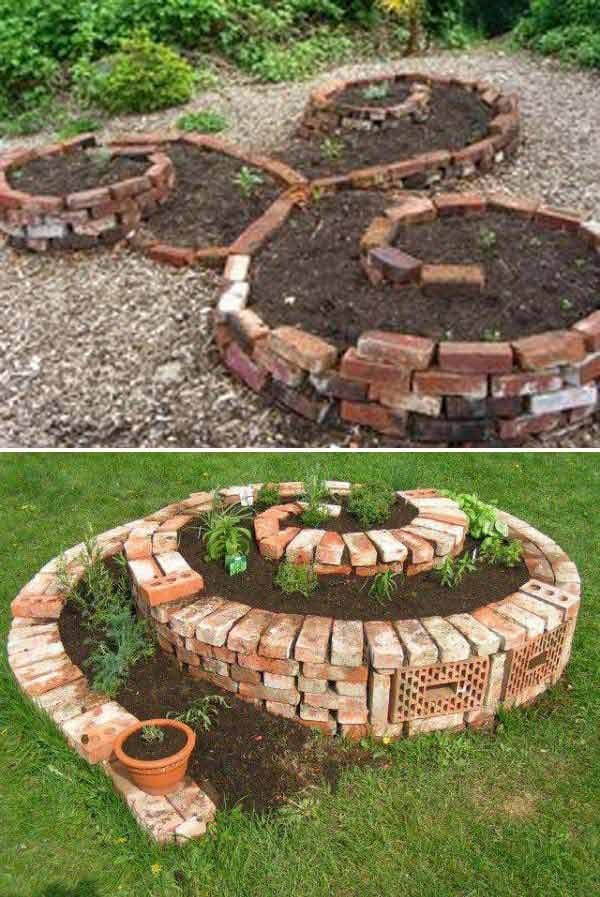How to Create a DIY Herb Spiral Garden: A Comprehensive Guide

Imagine transforming a small corner of your backyard into a lush, fragrant herb garden that not only looks stunning but also provides you with fresh herbs year-round. A DIY herb spiral garden is the perfect solution for small space gardening, offering a vertical herb garden design that maximizes space and creates a beautiful focal point. Ready to dive in? Let's explore how to create a DIY herb spiral garden that will be the envy of your neighborhood.
Understanding the Herb Spiral Concept
A herb spiral is a unique and efficient way to grow a variety of herbs in a small space. The spiral design allows for different microclimates, accommodating herbs that thrive in various conditions. The top of the spiral is drier and sunnier, perfect for Mediterranean herbs like rosemary and thyme. As you move down the spiral, the conditions become cooler and moister, ideal for herbs like parsley and chives.
Why Choose a Herb Spiral Garden?
Creating a DIY herb spiral garden offers numerous benefits:
- Space Efficiency: Perfect for small space gardening, a herb spiral allows you to grow a diverse range of herbs in a compact area.
- Variety: The different microclimates within the spiral enable you to grow herbs with varying needs.
- Aesthetics: A herb spiral adds a visually appealing element to your garden, making it a focal point.
- Ease of Access: The vertical design makes it easy to reach and harvest your herbs.
Materials Needed
Before you start, gather the following materials:
- Bricks, stones, or other building materials
- Compost and topsoil
- A variety of herb plants or seeds
- Gardening gloves
- A trowel
- A watering can
Step-by-Step Herb Spiral Tutorial
Step 1: Choose the Right Location
Select a spot in your garden that receives at least 6 hours of sunlight daily. Ensure the area is level and has good drainage.
Step 2: Design Your Spiral
Using bricks or stones, outline the shape of your spiral on the ground. Start with a small circle at the top and gradually widen the spiral as you move down. The spiral should be about 2 meters in diameter and 1 meter high at the center.
Step 3: Build the Spiral
Begin building the spiral from the bottom up, using your chosen materials. Lay the bricks or stones in a spiral pattern, ensuring the structure is stable. As you build, fill the center with compost and topsoil, creating a mound that will support your herbs.
Step 4: Plant Your Herbs
Now comes the fun part – planting your herbs! Start at the top of the spiral with herbs that prefer dry, sunny conditions, such as rosemary, thyme, and oregano. As you move down the spiral, plant herbs that require more moisture and shade, like parsley, chives, and mint.
Step 5: Water and Maintain
Water your herb spiral garden regularly, ensuring the soil remains moist but not waterlogged. Mulch the spiral to retain moisture and suppress weeds. Regularly prune your herbs to encourage bushy growth and prevent them from becoming leggy.
Tips for Successful Herb Spiral Gardening
- Companion Planting: Group herbs that have similar water and light requirements together.
- Rotation: Rotate your herbs annually to prevent soil depletion and pest infestations.
- Harvesting: Harvest your herbs regularly to encourage new growth and maintain plant health.
Conclusion
Creating a DIY herb spiral garden is a rewarding project that combines beauty and functionality. With a little planning and effort, you can transform a small space into a thriving herb garden that provides fresh herbs for your kitchen and adds a stunning visual element to your outdoor space. So, why wait? Get started on your herb spiral garden today and enjoy the fruits of your labor for years to come.
FAQs
What is the best size for a herb spiral garden? A herb spiral garden typically measures about 2 meters in diameter and 1 meter high at the center. This size allows for a variety of herbs and easy access.
Which herbs are best suited for the top of the spiral? Herbs that thrive in dry, sunny conditions, such as rosemary, thyme, and oregano, are ideal for the top of the spiral.
How often should I water my herb spiral garden? Water your herb spiral garden regularly, ensuring the soil remains moist but not waterlogged. The frequency will depend on your climate and the specific needs of your herbs.
Can I use recycled materials to build my herb spiral? Yes, you can use recycled materials like old bricks, stones, or even concrete blocks to build your herb spiral. Just ensure the materials are stable and safe for gardening.
How do I prevent pests in my herb spiral garden? Regularly inspect your herbs for signs of pests. Use organic pest control methods, such as neem oil or insecticidal soap, to keep pests at bay. Companion planting with herbs like mint and chives can also help deter pests.


0 Response to "How to Create a DIY Herb Spiral Garden: A Comprehensive Guide"
Post a Comment